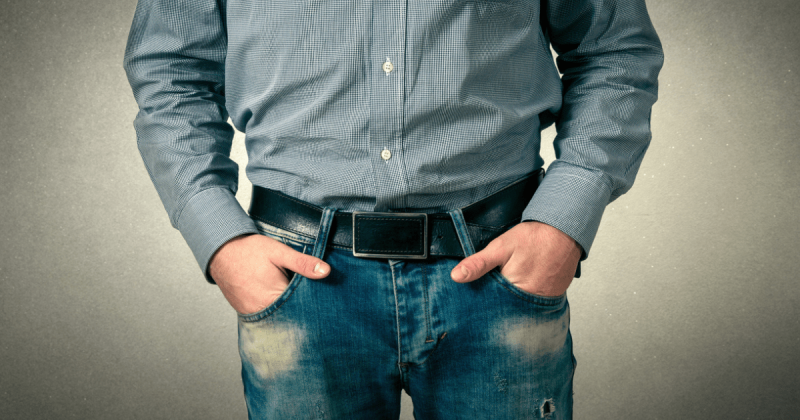Today we might be familiar with wireless call buttons, phones and pagers in hospital settings, but the history of nurse call systems vastly predates digital solutions. In fact, the original nursing care systems were in place for a good century, with a fantastic history that has passed through generations.Continue reading →
Adapting SEO Techniques for Small and Medium Enterprises
In today’s digital age, Search Engine Optimization (SEO) is not just a buzzword but a crucial aspect of any business strategy, including for small and medium enterprises (SMEs). As the digital marketplace grows more competitive, SMEs must adapt their SEO strategies to maintain visibility and relevance. This article delves into the world of SEO for SMEs, offering insights and techniques tailored to their specific needs.
Understanding the SEO Landscape for SMEs
SEO is the practice of optimizing a website to rank higher on search engine results pages (SERPs), thereby increasing the quantity and quality of the organic traffic a site receives. For SMEs, which often operate with limited resources, mastering SEO can be a game-changer. Unlike large corporations with hefty marketing budgets, SMEs need to be strategic about how they allocate their resources for maximum impact.
The Unique Challenges Faced by SMEs
SMEs often face unique challenges when it comes to SEO. They may not have the in-house expertise or the budget to hire an SEO specialist. Additionally, the competitive landscape can be daunting, especially for those competing against larger, more established players. However, these challenges also present opportunities for SMEs to leverage their agility and niche focus to carve out a space in their market.
Key SEO Techniques for SMEs
1. Local SEO
For many SMEs, local SEO is a critical component of their digital strategy. Local SEO helps businesses promote their products and services to local customers at the exact time they’re looking for them. This involves optimizing their local listings, acquiring local backlinks, and ensuring their website content reflects local keywords and phrases.
2. Content Marketing
Creating high-quality, relevant content is essential for engaging potential customers and building a brand’s authority. SMEs should focus on developing content that addresses the specific needs and interests of their target audience. This could include blog posts, videos, infographics, or case studies. Consistent content creation not only helps with SEO but also builds trust and credibility with customers.
3. Mobile Optimization
With the increasing use of smartphones, ensuring that a website is mobile-friendly is no longer optional. A mobile-optimized website improves user experience and is favored by search engines. SMEs should ensure their websites are responsive, load quickly, and are easy to navigate on mobile devices.
4. Use of Keywords
Effective keyword research and integration are crucial for SEO success. SMEs should identify keywords that potential customers are using to find products or services similar to theirs. Tools like Google Keyword Planner can assist in finding the right keywords. It’s important to use these keywords naturally within the content to avoid keyword stuffing, which can negatively impact search rankings.
Leverage External Resources
SMEs can benefit from external SEO resources to supplement their efforts. For instance, collaborating with local SEO experts can be invaluable. One such resource is Huntsville SEO, which offers tailored SEO services to help businesses in the Huntsville area improve their online visibility.
Conclusion
Adapting SEO techniques for SMEs involves understanding the unique challenges and opportunities presented by their size and market position. By focusing on local SEO, content marketing, mobile optimization, and strategic keyword use, SMEs can effectively enhance their online presence. Leveraging external SEO resources can further bolster their efforts, allowing them to compete effectively in the digital marketplace.
As the digital landscape continues to evolve, SMEs must remain agile and informed, adapting their SEO strategies to ensure sustained growth and success.
The Art of Staying Prepared: Concealed Carry Shirt Benefits and Considerations
Key Takeaways:
- Concealed carry shirts combine practicality with everyday wear.
- Understanding fabric materials and shirt designs is crucial for maximum comfort.
- Regulations around concealed carry clothing can vary, making local awareness key.
Enhancing Brand Presence: Lessons from Top Agencies
In the fast-paced world of digital marketing, enhancing brand presence is paramount for businesses aiming to thrive in a competitive landscape. Top marketing agencies have mastered the art and science of brand enhancement, offering valuable lessons for businesses of all sizes. This article delves into the strategies employed by these agencies to elevate brand presence and provides insights on how companies can apply these techniques to their own marketing efforts.
The Importance of Brand Presence
Brand presence is more than just visibility; it’s about creating a memorable and engaging identity that resonates with consumers. A strong brand presence not only attracts new customers but also retains existing ones, fostering loyalty and advocacy. By establishing a distinctive brand identity, businesses can differentiate themselves from competitors and build a robust market position.
Lessons from Top Agencies
1. Storytelling as a Tool for Connection
Top marketing agencies understand the power of storytelling in creating emotional connections with audiences. By crafting compelling narratives, brands can communicate their values, mission, and unique selling propositions in a way that resonates with consumers. Storytelling transforms marketing from a transactional activity into a relational one, fostering deeper engagement and connection.
2. Leveraging Data-Driven Insights
Data is the backbone of modern marketing strategies. Leading agencies utilize data-driven insights to understand consumer behavior, preferences, and trends. This information informs targeted marketing campaigns that are more effective in reaching and engaging the desired audience. By embracing data analytics, businesses can make informed decisions that enhance their brand presence.
3. Embracing Digital Platforms
In today’s digital age, a strong online presence is crucial. Top agencies prioritize digital marketing strategies, including search engine optimization (SEO), social media marketing, and content marketing, to reach a wider audience.
By optimizing their digital platforms, brands can ensure they are visible where their target audience spends the most time, thereby strengthening their brand presence.
4. Consistency Across All Channels
Consistency is key to building a cohesive brand identity. Top agencies ensure that a brand’s message, tone, and visual elements are consistent across all marketing channels. This uniformity reinforces brand recognition and trust, making it easier for consumers to connect with the brand on various platforms.
Implementing Agency Strategies
Businesses looking to enhance their brand presence can learn from the strategies employed by top marketing agencies.
By focusing on storytelling, leveraging data, embracing digital platforms, and maintaining consistency, companies can create a powerful brand presence that resonates with their audience.
Finding the Right Partner
For businesses seeking expert guidance, partnering with a skilled marketing agency can be transformative. To find the best fit, consider exploring options by searching for Marketing agencies near me. Partnering with an experienced agency can provide the expertise and resources necessary to amplify brand presence and achieve marketing goals.
Conclusion
Enhancing brand presence requires a strategic approach that combines creativity, data, and consistency. By learning from the lessons of top marketing agencies, businesses can craft compelling brand stories, engage their target audience, and establish a strong market position. In a digital world where first impressions matter, investing in brand presence is more crucial than ever for long-term success.
How to Make Afternoon Tea at Home
Afternoon tea at home? Yes, please! There’s something delightfully indulgent about sitting down to a spread of treats with a nice cup of tea. And the best part? You don’t need a fancy tearoom or a special occasion to enjoy it. With a little creativity and some delicious bites, you can recreate the charm of afternoon tea right in your own kitchen, so keep reading to find out more.Continue reading →
6 Ways to Save Energy in Manufacturing Businesses
If you’re looking for ways to minimise your manufacturing costs, here are some smart energy-saving tips.Continue reading →
How to Successfully Open Your New Clothing Store
If you have a passion for fashion and clothing, then you may want to consider opening up your own clothing store. Owning your own store can be a very exciting venture, as it will give you a chance to delve deeper into the fashion industry and work closely with end customers. However, creating a successful store can be very challenging, and it will take a lot of careful planning to ensure that it is a success. In this article, we will explore some great ways that you can successfully open a clothing store.Continue reading →
Gout-Friendly Footwear Recommended by Foot and Ankle Specialists
Gout can turn something as simple as walking into a painful ordeal. When sensitive joints in the feet flare up, every step matters. Foot and ankle specialists often recommend specific footwear to alleviate discomfort and support healing. These shoes aren’t just about comfort—they’re carefully designed to address the unique needs of those living with gout. Continue reading →
What’s a Good Retirement Gift for a Woman?
Retirement is a monumental milestone in anyone’s life, marking the end of a career and the beginning of a new chapter. For women, this moment is an opportunity to reflect on years of hard work, dedication, and accomplishments. When considering a retirement gift for a woman, it’s important to select something meaningful, practical, and personal. A thoughtful retirement gift can be a symbol of appreciation, a celebration of her achievements, or something that helps her embrace the freedom and leisure of retirement. Here are some ideas to inspire you when looking for the perfect retirement gift.Continue reading →
Are You Underestimating CMMC Requirements?
Meeting the Cybersecurity Maturity Model Certification (CMMC) requirements might seem straightforward at first glance, but many companies quickly realize it’s more intricate than expected. Whether you’re a seasoned cybersecurity professional or new to compliance, it’s easy to overlook the smaller details that make a big difference in your certification journey. Underestimating CMMC requirements isn’t uncommon, but it can lead to delays, added costs, and significant headaches. Here’s a closer look at some common pitfalls and how to avoid them, so you can move through your CMMC assessments smoothly.
Common Gaps That Sneak Up in CMMC Preparation
Preparation for CMMC assessments often reveals gaps that companies didn’t anticipate. These gaps might appear minor at first, like a lack of documentation or inconsistent password policies, but they can quickly escalate into larger issues during the audit process. When the CMMC assessment guide specifies requirements, it means every policy and control must be clear, consistent, and measurable. Missing or inconsistent details can leave businesses vulnerable during the assessment.
A CMMC consultant can help pinpoint these often-overlooked areas, bringing a trained eye to policies, procedures, and technical controls that may otherwise slip through the cracks. Companies often think they’re prepared until these overlooked areas emerge as sticking points. Early identification and correction of these gaps can make all the difference in a smooth assessment process.
Why Skipping Small Details Can Lead to Big Setbacks
Skipping the small details might seem harmless, but when it comes to CMMC, those details matter. Every specific requirement outlined in the CMMC assessment guide has a purpose, from access controls to regular data backups. Each of these seemingly small items builds the overall structure of compliance, and missing even one can impact your certification status.
Companies often focus on the bigger picture without giving enough attention to granular details like access logs or multi-factor authentication on all endpoints. However, auditors look at the big and small requirements alike. Ignoring the small items can result in setbacks and prolong the certification process, making it harder to achieve compliance on schedule.
How Misjudging Requirements Impacts Your Certification Timeline
Misjudging the time and effort required for CMMC compliance can derail a company’s timeline significantly. Preparing for CMMC isn’t a “one-and-done” process; it requires consistent planning, implementation, and monitoring. Companies that rush through the early stages often find themselves struggling to meet deadlines when audit time rolls around.
The best way to avoid timeline issues is to start early, create a realistic plan, and allow time for unexpected roadblocks. A CMMC consultant can offer guidance on timelines and ensure you stay on track. Rushing through the process without a well-organized timeline can lead to missed details and, ultimately, certification delays that could impact contracts and business operations.
The Hidden Costs of Not Fully Understanding CMMC Standards
Misunderstanding CMMC standards can lead to hidden costs that add up quickly. From purchasing additional software to hiring extra staff to close compliance gaps, underestimating the full scope of CMMC can have financial repercussions. Many businesses find themselves paying more than expected due to unforeseen compliance costs.
Avoiding these costs requires a clear understanding of each CMMC level and its specific requirements. With a knowledgeable CMMC consultant, companies can avoid unexpected expenses by fully understanding what’s needed upfront. Investing in thorough preparation is often more cost-effective than dealing with surprises later in the process.
Avoiding Surprises with Thorough Risk and Readiness Checks
Thorough risk and readiness checks are essential in preparing for a successful CMMC assessment. These checks reveal areas where the company’s current security measures fall short and highlight areas for improvement. Regular internal audits, vulnerability scans, and self-assessments can help spot gaps early and prepare the company for what the CMMC assessment will entail.
Conducting these checks isn’t just about finding issues; it’s also about proving readiness to the CMMC assessors. Being able to show a history of proactive monitoring and risk assessment demonstrates a serious commitment to security and compliance, which can only strengthen your standing during the official evaluation.
The Difference Between “Good Enough” and Fully Compliant
When it comes to CMMC, aiming for “good enough” won’t cut it. Fully compliant means meeting all specified requirements without cutting corners. Companies often think that achieving most of the requirements will suffice, but the CMMC assessment guide is clear: every control and standard must be met. Partial compliance can lead to non-certification, meaning all the time and resources spent are essentially wasted.
Aiming for full compliance requires thorough preparation and sometimes even cultural shifts within the organization. Engaging a CMMC consultant can help ensure every standard is met with the proper documentation and protocols. Fully compliant means fully secure — and in today’s cybersecurity landscape, there’s no room for half-measures.






